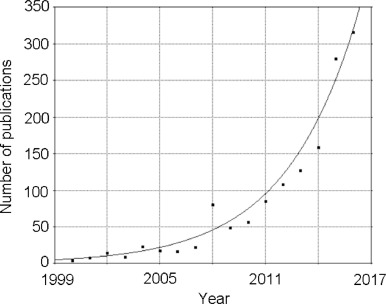当前位置:
X-MOL 学术
›
Prog. Energy Combust. Sci.
›
论文详情
Our official English website, www.x-mol.net, welcomes your feedback! (Note: you will need to create a separate account there.)
A current perspective on the accuracy of incoming solar energy forecasting
Progress in Energy and Combustion Science ( IF 29.5 ) Pub Date : 2019-01-01 , DOI: 10.1016/j.pecs.2018.10.003 Robert Blaga , Andreea Sabadus , Nicoleta Stefu , Ciprian Dughir , Marius Paulescu , Viorel Badescu
Progress in Energy and Combustion Science ( IF 29.5 ) Pub Date : 2019-01-01 , DOI: 10.1016/j.pecs.2018.10.003 Robert Blaga , Andreea Sabadus , Nicoleta Stefu , Ciprian Dughir , Marius Paulescu , Viorel Badescu

|
Abstract The state-of-the-art in the accuracy of solar resources forecasting is obtained by using results reported in 1705 accuracy tests reported in several geographic regions (North America, Europe, Asia, Australia). There is a tendency in literature to avoid reporting model performance assessments in places, or on time-horizons, where it is known that the models have low performance. Usual bias and spreading statistical indicators are useful tools but taking proper decision by managers of funding agencies and policy makers requires usage of additional error measures. Several classes of forecasting models have been compared: persistence, classical statistics, machine learning, cloud-motion tracking, numerical weather prediction and hybrid models (combining classical statistics with machine learning approach and/or exogenous inputs). Forecasting errors increase by increasing the time-horizon. Forecasting model performance depends on time-horizon and climate. Machine learning and hybrid models have the best performance for intra-hour performance in all climates. The best intra-hour forecasts are provided in all climates by machine learning and classical statistics models while the hybrid models perform well in tropical and snow climates. For day-ahead forecasts the hybrid models have very good performance in all climates. Generally, the hybrid models have the best performance. The accuracy of the forecasting models significantly increased in the last decade. The normalized MBE and RMSE have been reduced by two thirds and one third, respectively.
中文翻译:

当前对入射太阳能预测准确性的看法
摘要 太阳能资源预测精度的最新技术是通过使用在几个地理区域(北美、欧洲、亚洲、澳大利亚)报告的 1705 次精度测试中报告的结果获得的。文献中倾向于避免在已知模型性能低下的地方或时间范围内报告模型性能评估。通常的偏见和传播统计指标是有用的工具,但供资机构的管理者和政策制定者做出正确的决定需要使用额外的错误措施。已经比较了几类预测模型:持久性、经典统计、机器学习、云运动跟踪、数值天气预报和混合模型(将经典统计与机器学习方法和/或外生输入相结合)。预测误差随着时间范围的增加而增加。预测模型的性能取决于时间范围和气候。机器学习和混合模型在所有气候下都具有最佳的小时内性能。机器学习和经典统计模型可在所有气候下提供最佳的小时内预测,而混合模型在热带和雪地气候中表现良好。对于日前预报,混合模型在所有气候条件下都具有非常好的性能。通常,混合模型具有最佳性能。预测模型的准确性在过去十年中显着提高。归一化的 MBE 和 RMSE 分别减少了三分之二和三分之一。机器学习和混合模型在所有气候下都具有最佳的小时内性能。机器学习和经典统计模型可在所有气候下提供最佳的小时内预测,而混合模型在热带和雪地气候中表现良好。对于日前预报,混合模型在所有气候条件下都具有非常好的性能。通常,混合模型具有最佳性能。预测模型的准确性在过去十年中显着提高。归一化的 MBE 和 RMSE 分别减少了三分之二和三分之一。机器学习和混合模型在所有气候下都具有最佳的小时内性能。机器学习和经典统计模型可在所有气候下提供最佳的小时内预测,而混合模型在热带和雪地气候中表现良好。对于日前预报,混合模型在所有气候条件下都具有非常好的性能。通常,混合模型具有最佳性能。预测模型的准确性在过去十年中显着提高。归一化的 MBE 和 RMSE 分别减少了三分之二和三分之一。对于日前预报,混合模型在所有气候条件下都具有非常好的性能。通常,混合模型具有最佳性能。预测模型的准确性在过去十年中显着提高。归一化的 MBE 和 RMSE 分别减少了三分之二和三分之一。对于日前预报,混合模型在所有气候条件下都具有非常好的性能。通常,混合模型具有最佳性能。预测模型的准确性在过去十年中显着提高。归一化的 MBE 和 RMSE 分别减少了三分之二和三分之一。
更新日期:2019-01-01
中文翻译:

当前对入射太阳能预测准确性的看法
摘要 太阳能资源预测精度的最新技术是通过使用在几个地理区域(北美、欧洲、亚洲、澳大利亚)报告的 1705 次精度测试中报告的结果获得的。文献中倾向于避免在已知模型性能低下的地方或时间范围内报告模型性能评估。通常的偏见和传播统计指标是有用的工具,但供资机构的管理者和政策制定者做出正确的决定需要使用额外的错误措施。已经比较了几类预测模型:持久性、经典统计、机器学习、云运动跟踪、数值天气预报和混合模型(将经典统计与机器学习方法和/或外生输入相结合)。预测误差随着时间范围的增加而增加。预测模型的性能取决于时间范围和气候。机器学习和混合模型在所有气候下都具有最佳的小时内性能。机器学习和经典统计模型可在所有气候下提供最佳的小时内预测,而混合模型在热带和雪地气候中表现良好。对于日前预报,混合模型在所有气候条件下都具有非常好的性能。通常,混合模型具有最佳性能。预测模型的准确性在过去十年中显着提高。归一化的 MBE 和 RMSE 分别减少了三分之二和三分之一。机器学习和混合模型在所有气候下都具有最佳的小时内性能。机器学习和经典统计模型可在所有气候下提供最佳的小时内预测,而混合模型在热带和雪地气候中表现良好。对于日前预报,混合模型在所有气候条件下都具有非常好的性能。通常,混合模型具有最佳性能。预测模型的准确性在过去十年中显着提高。归一化的 MBE 和 RMSE 分别减少了三分之二和三分之一。机器学习和混合模型在所有气候下都具有最佳的小时内性能。机器学习和经典统计模型可在所有气候下提供最佳的小时内预测,而混合模型在热带和雪地气候中表现良好。对于日前预报,混合模型在所有气候条件下都具有非常好的性能。通常,混合模型具有最佳性能。预测模型的准确性在过去十年中显着提高。归一化的 MBE 和 RMSE 分别减少了三分之二和三分之一。对于日前预报,混合模型在所有气候条件下都具有非常好的性能。通常,混合模型具有最佳性能。预测模型的准确性在过去十年中显着提高。归一化的 MBE 和 RMSE 分别减少了三分之二和三分之一。对于日前预报,混合模型在所有气候条件下都具有非常好的性能。通常,混合模型具有最佳性能。预测模型的准确性在过去十年中显着提高。归一化的 MBE 和 RMSE 分别减少了三分之二和三分之一。


























 京公网安备 11010802027423号
京公网安备 11010802027423号